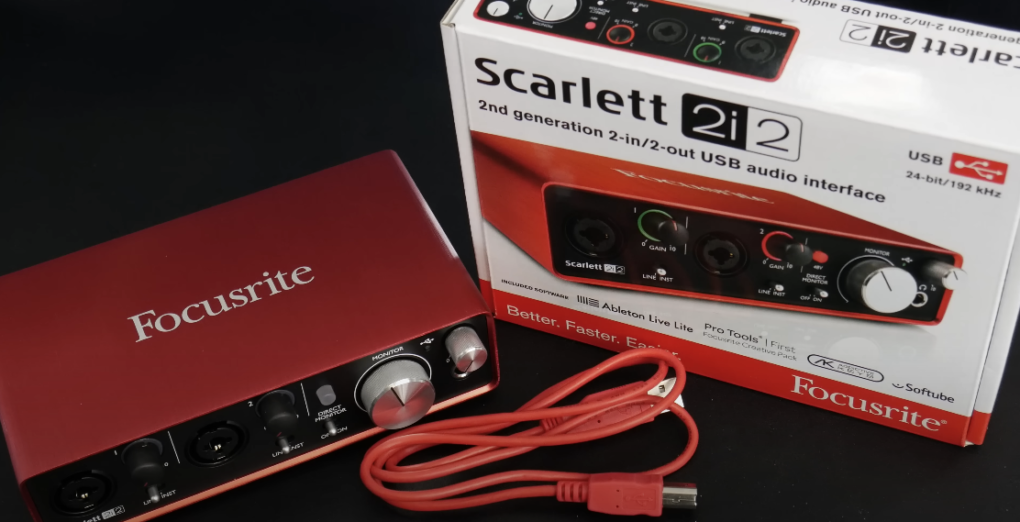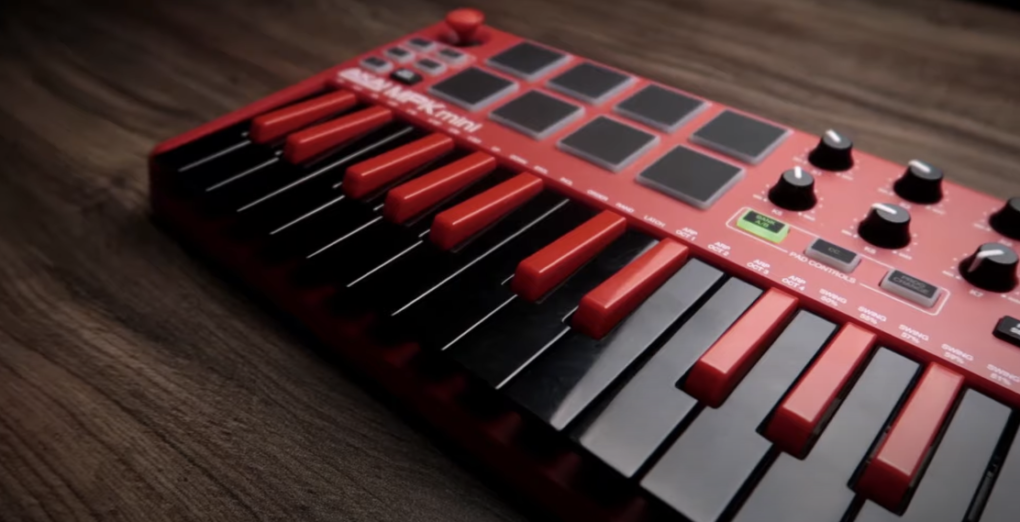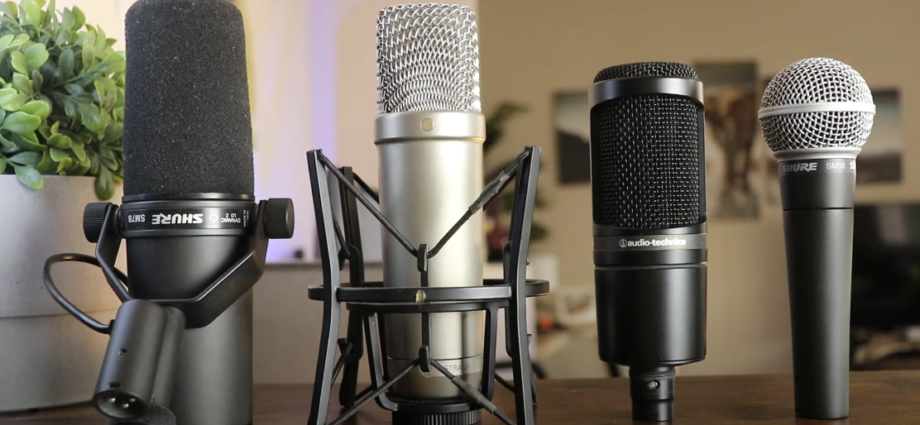The magic of rap music lies in its profound lyrics and rhythmic beats. And with the increasing accessibility of music production technology, anyone can create their own rap beats and lay down verses from the comfort of their home. In this article, we will discuss the key elements that you need to make your rap music studio.
Microphones: Your Voice’s Best Friend
Arguably the most critical part of a rap studio, the microphone transforms your voice into an electronic signal.
Dynamic Microphones
Dynamic microphones are highly versatile and widely used in various audio recording and live sound applications. They are known for their durability, affordability, and ability to handle high sound pressure levels, making them a popular choice among musicians, broadcasters, and performers. One notable example of a dynamic microphone is the Shure SM58.
Dynamic microphones offer several advantages that make them suitable for specific applications. Some key features include:
- Durability: Dynamic microphones are built to withstand rough handling and harsh environments, making them ideal for on-stage performances and touring;
- Affordability: Compared to other types of microphones, dynamic microphones are generally more budget-friendly, making them accessible to a wide range of users;
- High Sound Pressure Level (SPL) Handling: Dynamic microphones can handle loud sounds without distortion or overload, making them suitable for capturing loud instruments, such as drums or guitar amplifiers, as well as for vocalists with powerful voices;
- Directionality: Most dynamic microphones are unidirectional, meaning they primarily capture sound from one direction. This feature helps reduce background noise and feedback issues in live sound situations;
- Robustness: Dynamic microphones utilize a robust design with a moving coil attached to a diaphragm. This design allows them to handle rough treatment and perform reliably even in demanding environments.
Table: Comparison of Dynamic Microphones
| Microphone Model | Frequency Response Range | Polar Pattern | Impedance | Sensitivity |
|---|---|---|---|---|
| Shure SM58 | 50 Hz – 15 kHz | Cardioid | 150 ohms | -54.5 dBV/Pa |
| Audio-Technica | 50 Hz – 16 kHz | Hypercardioid | 300 ohms | -55 dBV/Pa |
| SM57 | 40 Hz – 15 kHz | Cardioid | 150 ohms | -56 dBV/Pa |
Condenser Microphones
Condenser microphones are highly regarded for their sensitivity, accuracy, and ability to capture detailed and nuanced audio. They are commonly used in professional recording studios, broadcasting, and podcasting setups. One popular example of a condenser microphone is the Audio-Technica AT2020.
Condenser microphones offer several advantages that make them suitable for various applications. Here are some key features:
- Sensitivity: Condenser microphones are known for their high sensitivity, allowing them to capture even the faintest sounds with clarity. This makes them ideal for capturing the subtle nuances in vocals and acoustic instruments;
- Frequency Response: Condenser microphones typically provide a broader frequency response compared to dynamic microphones. They can accurately capture a wide range of frequencies, from the low-end bass to the high-end treble, resulting in a more detailed and natural sound reproduction;
- Phantom Power: Most condenser microphones require phantom power to operate. Phantom power is a DC voltage (+48V) supplied by audio interfaces or mixers. It energizes the microphone’s internal components, allowing it to function effectively;
- Diaphragm Types: Condenser microphones employ different diaphragm types, such as small-diaphragm and large-diaphragm. Small-diaphragm condensers excel at capturing fast transients and are commonly used for instruments like acoustic guitars and cymbals. Large-diaphragm condensers are favored for vocals, as they provide a warm and intimate sound.
Table: Comparison of Condenser Microphones
| Microphone Model | Frequency Response Range | Polar Pattern | Impedance | Sensitivity |
|---|---|---|---|---|
| Audio-Technica AT2020 | 20 Hz – 20 kHz | Cardioid | 100 ohms | -37 dBV/Pa |
| Neumann U87 | 20 Hz – 20 kHz | Switchable | 200 ohms | -36 dBV/Pa |
| Rode NT1 | 20 Hz – 20 kHz | Cardioid | 100 ohms | -29 dB re 1V/Pa |
Comparison Between Dynamic and Condenser Microphones
| Dynamic Microphone | Condenser Microphone | |
|---|---|---|
| Durability | High | Moderate |
| Sensitivity | Low | High |
| Frequency Response | Limited | Broad |
| Price | Low | High |
Audio Interfaces: Converting Sounds

An audio interface is a crucial piece of equipment in a rap studio, serving as the bridge between your analog microphones and your digital recording setup. It converts the analog signals from your microphone into digital signals that your computer can process and record. This process ensures high-quality and accurate sound capture for your rap vocals and instruments.
Popular Audio Interfaces:
- Focusrite Scarlett 2i2: The Focusrite Scarlett 2i2 is a compact and versatile audio interface that is perfect for home studios and portable setups. It offers excellent sound quality, reliable performance, and a user-friendly interface. The Scarlett 2i2 features two combination XLR/TRS inputs, allowing you to connect microphones and instruments simultaneously. It also includes phantom power for condenser microphones and offers low-latency monitoring capabilities;
- Presonus AudioBox USB 96: The Presonus AudioBox USB 96 is an affordable and reliable audio interface that provides professional-grade sound quality. It features two XLR/TRS combo inputs with Class A mic preamps, allowing for clean and transparent recordings. The AudioBox USB 96 supports up to 96 kHz audio resolution and offers zero-latency monitoring. It also includes MIDI I/O, making it suitable for integrating MIDI controllers into your rap studio setup.
Headphones & Monitors: Critical Listening Tools
When creating and editing rap music, it’s crucial to have equipment that allows you to listen to your work with the utmost clarity and precision. Two essential tools for critical listening in a rap studio are studio headphones and studio monitors.
Studio Headphones
Studio headphones are an affordable and portable solution for accurate monitoring during rap music production. They are designed to provide a detailed and balanced sound reproduction, allowing you to hear all the nuances and subtleties in your music. Here are two popular choices for studio headphones:
- Audio-Technica ATH-M50x: The Audio-Technica ATH-M50x is highly regarded for its exceptional sound quality and comfort. These headphones deliver a clear and accurate sound representation, making them suitable for mixing and mastering tasks. They have a closed-back design, providing good noise isolation and preventing sound leakage. The ATH-M50x is a favorite among rap music producers and enthusiasts;
- Sennheiser HD 280 Pro: The Sennheiser HD 280 Pro is known for its durability and excellent sound isolation. These headphones offer a neutral and balanced sound signature, allowing you to hear your rap tracks with clarity and precision. They are comfortable to wear for extended periods, making them suitable for long recording and editing sessions.
Table: Comparison of Studio Headphones
| Headphone Model | Frequency Response | Impedance | Closed-Back Design | Price Range |
|---|---|---|---|---|
| Audio-Technica ATH-M50x | 15 Hz – 28 kHz | 38 ohms | Yes | $150 – $200 |
| Sennheiser HD 280 Pro | 8 Hz – 25 kHz | 64 ohms | Yes | $100 – $150 |
Studio Monitors
Studio monitors are essential for accurate and uncolored sound representation, particularly during the mixing and mastering stages of rap music production. They provide a detailed and precise listening experience, allowing you to make informed decisions about your mix. Here are two popular studio monitor options:
- KRK Rokit 5 G4: The KRK Rokit 5 G4 is widely used in the industry and known for its balanced sound reproduction. These active studio monitors feature a 5-inch woofer and a 1-inch tweeter, delivering clear midrange and detailed high-frequency response. The Rokit 5 G4 offers various controls for adjusting the sound to match your studio environment;
- Yamaha HS5: The Yamaha HS5 is another favorite choice among rap music producers and engineers. These monitors offer a flat and accurate frequency response, enabling you to hear your music without coloration. The HS5 features a 5-inch woofer and a 1-inch dome tweeter, providing a precise and well-defined soundstage.
Table: Comparison of Studio Monitors
| Monitor Model | Woofer Size | Tweeter Size | Frequency Response | Price Range |
|---|---|---|---|---|
| KRK Rokit 5 G4 | 5 inches | 1 inch | 43 Hz – 40 kHz | $200 – $300 |
| Yamaha HS5 | 5 inches | 1 inch | 54 Hz – 30 kHz | $300 – $400 |
Digital Audio Workstations (DAWs): The Heart of Production
Digital Audio Workstations are software platforms where you can record, edit, mix, and master your music.
- FL Studio: Known for its excellent loop sequencing and beat-making tools, making it popular among rap producers;
- Ableton Live: Features a versatile range of tools and is favored for its real-time editing capabilities;
- Logic Pro X: Exclusive to Mac, it boasts an intuitive interface and a vast library of sounds.
MIDI Controllers: Bringing Beats to Life

MIDI controllers, specifically MIDI keyboards, are instrumental in programming drums, triggering samples, and playing synthesizers.
- Akai Professional MPK Mini MKII: This compact and affordable MIDI keyboard controller is loaded with a wide range of features, making it a versatile and powerful tool for music production;
- Novation Launchkey Mini MKIII: Designed to seamlessly integrate with Ableton Live, this compact MIDI keyboard offers intuitive control and enhanced workflow for musicians and producers working with the popular music production software.
Conclusion
Creating your own rap music is an exciting journey filled with creativity and discovery. The essential equipment discussed in this guide, including microphones, audio interfaces, headphones, monitors, DAWs, and MIDI controllers, will help you bring your ideas to life. Remember to choose equipment that suits your specific needs and preferences, unleash your creativity, and make some incredible rap music.
FAQS
To make rap music, you will need a good microphone, an audio interface, headphones or studio monitors, a digital audio workstation (DAW), and a MIDI controller.
For a home rap studio, you will need a quiet space, a computer, a microphone, an audio interface, studio headphones or monitors, a DAW, and a MIDI controller. Additionally, you may want sound treatment materials to improve your room’s acoustics.
You can record rap at home by setting up a quiet and well-treated space. Connect your microphone to the audio interface, which in turn should connect to your computer. Open your DAW, select the correct input source, and you’re ready to record.
To start rapping at home, first, familiarize yourself with rap music by listening to a variety of artists and styles. Then, practice writing lyrics and delivering them rhythmically. Once you’re comfortable, you can begin recording your rap using the equipment mentioned above.
